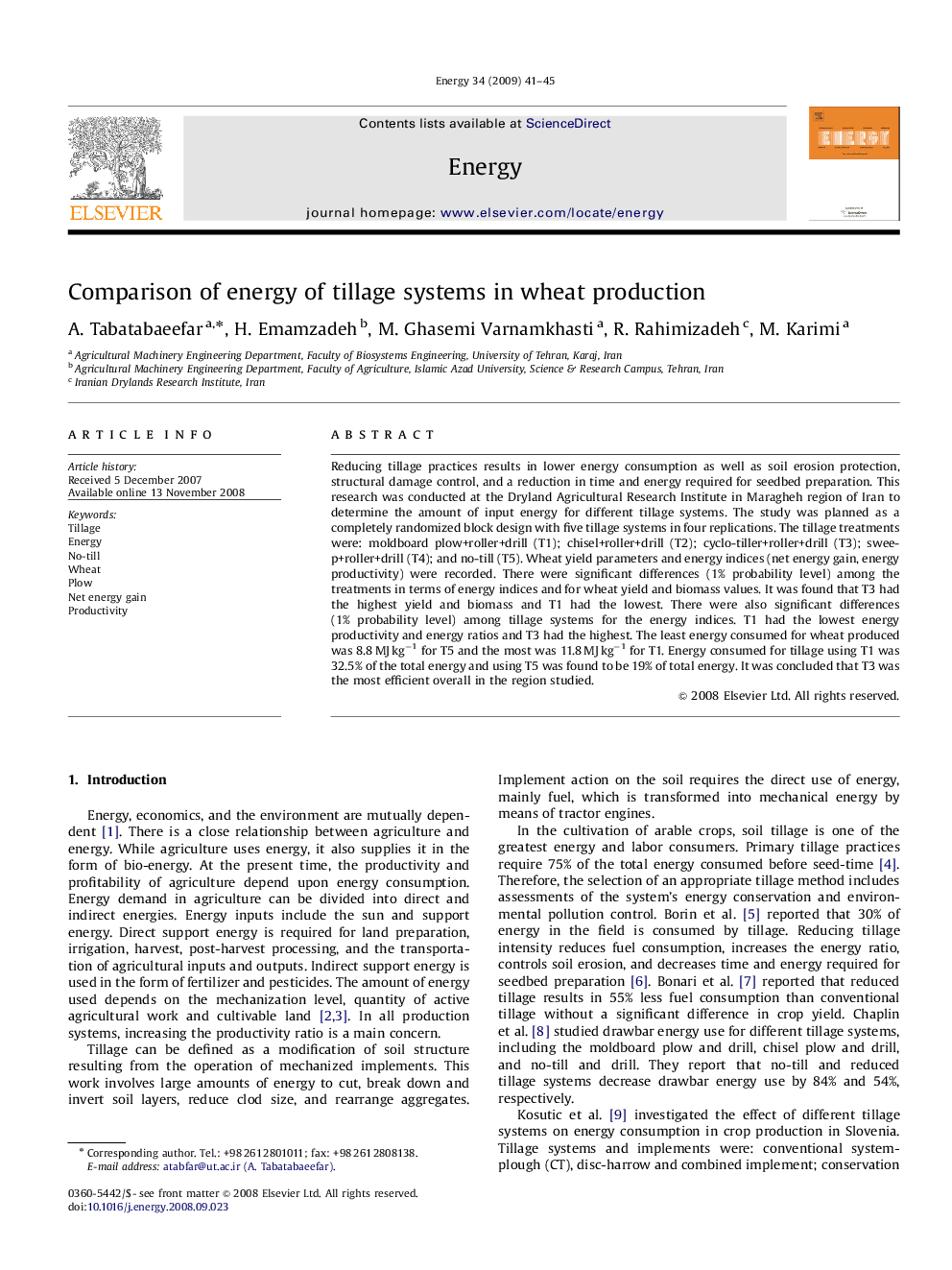| کد مقاله | کد نشریه | سال انتشار | مقاله انگلیسی | نسخه تمام متن |
|---|---|---|---|---|
| 1735922 | 1016198 | 2009 | 5 صفحه PDF | دانلود رایگان |

Reducing tillage practices results in lower energy consumption as well as soil erosion protection, structural damage control, and a reduction in time and energy required for seedbed preparation. This research was conducted at the Dryland Agricultural Research Institute in Maragheh region of Iran to determine the amount of input energy for different tillage systems. The study was planned as a completely randomized block design with five tillage systems in four replications. The tillage treatments were: moldboard plow+roller+drill (T1); chisel+roller+drill (T2); cyclo-tiller+roller+drill (T3); sweep+roller+drill (T4); and no-till (T5). Wheat yield parameters and energy indices (net energy gain, energy productivity) were recorded. There were significant differences (1% probability level) among the treatments in terms of energy indices and for wheat yield and biomass values. It was found that T3 had the highest yield and biomass and T1 had the lowest. There were also significant differences (1% probability level) among tillage systems for the energy indices. T1 had the lowest energy productivity and energy ratios and T3 had the highest. The least energy consumed for wheat produced was 8.8 MJ kg−1 for T5 and the most was 11.8 MJ kg−1 for T1. Energy consumed for tillage using T1 was 32.5% of the total energy and using T5 was found to be 19% of total energy. It was concluded that T3 was the most efficient overall in the region studied.
Journal: Energy - Volume 34, Issue 1, January 2009, Pages 41–45